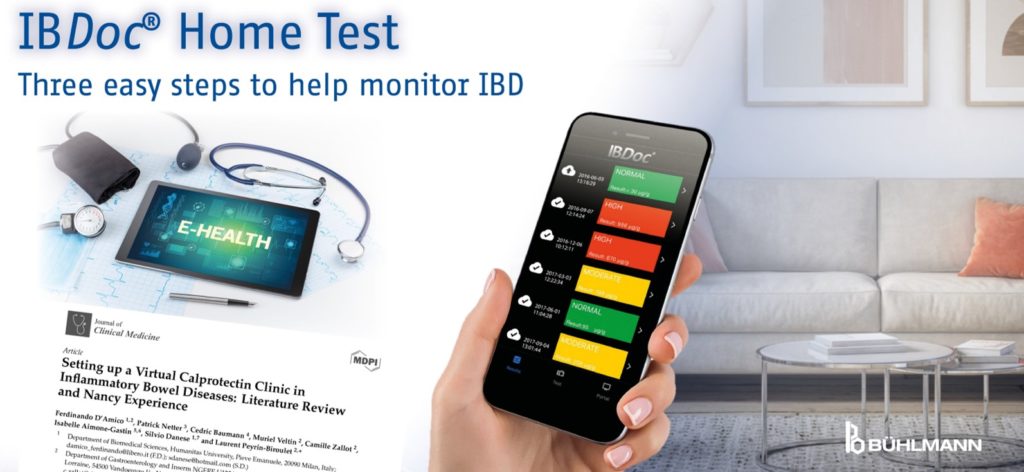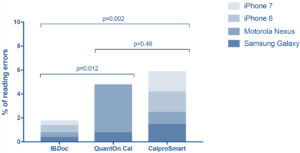In 2016, the Nancy University Hospital has set-up a virtual clinic for Inflammatory Bowel Disease (IBD) patients. The main goal of this eHealth solution is to provide a communication channel between patients and the healthcare professionals and to decide on patient management changes. In 2018, the IBD unit decided to add the possibility to perform a fecal calprotectin test at home, using IBDoc®. In order to check the patient acceptance for such a tool, the hospital decided to organize a study designed to confirm the usability and usefulness of IBDoc® (1). 30 enrolled patients were asked to perform one home test and to fill out a questionnaire based on multiple-choice questions.
The IBDoc® home test was widely accepted by patients and identified as simple to use by most users (19/20). In addition, all patients except 1 reported that they would like to continue with IBDoc® in the future and that they recommend home testing to other patients. The study team noted an improvement of the patient management over their own disease with this tool. Indeed, they reported that 66% of enrolled patients successfully performed the home test whereas the adherence rate to an ELISA test is 35%. You can find the detailed results of this study in the quoted paper below.
In the past few years, eHealth has grown exponentially, and especially for chronic diseases remote monitoring leads this development. In the IBD field clinics are moving towards electronic Patient Reported Outcome (ePRO) to follow their patient wellbeing from afar. Fecal calprotectin testing at home is the perfect addition to PROs in order to make sure that the patients’ symptoms are not caused by an underlying inflammation. With the COVID-19 crisis, the need for remote monitoring tools has been highlighted to keep patients out of the hospital for as long as possible (2). Tools such as IBDoc® can help towards this goal as it can help predict an upcoming flare, therefore identifying patients that actually need to go to the hospital.
Before settling on IBDoc®, the study team reviewed the other home tests in the market. Based on the comparison study performed by Haisma et al., 2019 (3), they chose IBDoc® as it had shown the superiority of IBDoc® compared to other home testing tools. The study team conducted a method comparison between the 3 available tests, using 40 stool samples. Agreement to ELISA, usability and Reading Error Rate were the study outcomes, that highlighted the IBDoc® advantage versus the other tested tools.
Concordance to ELISA for the 3 home tests were 82%, 79% and 73%, respectively for IBDoc®, QuantOnCal® and CalproSmart®. Error rates were significantly higher for CalproSmart® and QuantOnCal® compared to IBDoc®, 5,8%, 4,8% and 1,9%, respectively. Very low error rates result in IBDoc® performing with the highest usability score compared to the 2 other home tests.
As highlighted in the D’Amico paper, even if the concordance to ELISA remains the most important factor to choose a test, the usability is very important, especially for the patients acceptance and ease of use. If the test is too difficult to use or suffers from technical problems or errors, patients are discouraged to engage and trust in home testing. It is therefore important that manufacturers also focus on the user-friendliness of their devices, and IBDoc® is in line with these expectations.
- D’Amico et al., 2020; Setting up a Virtual Calprotectin Clinic in Inflammatory Bowel Diseases: Literature Review and Nancy Experience; Journal of Clinical Medicine; doi:10.3390/jcm9092697
- COVID-19 ECCO Taskforce, published March 20, 2020
- Haisma et al., 2019; Head-to-head comparison of three stool calprotectin tests for home use; PLOS ONE; doi: 10.1371/journal.pone.0214751

